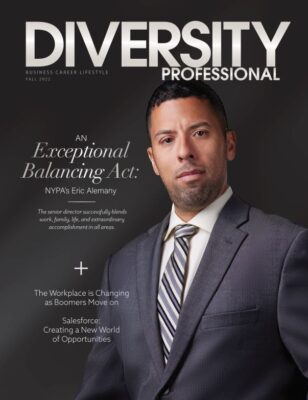Small Businesses And Ever-Changing Environments
 Sylvana Caridi Coche»
Sylvana Caridi Coche»
The world is moving at light speed and it is increasingly difficult for every company to stay relevant. In this environment, large corporations can no longer own every function, internally. They’d rather outsource to smaller companies who are nimbler. This is great news for smaller companies. But, now, can all small companies respond to the large corporations’ requirements?
Faced with security threats and financial pressure, large corporations demand more guarantees from their suppliers: cybersecurity compliance, higher liability insurance, longer payment terms, lower cost and shorter contracts to stay flexible. Isn’t it a paradox? How can we, small businesses, comply with all these requirements? How can we invest in new products, technologies, ideas for a shorter return on investment (ROI), present higher financial stability and insurances, be cybersecurity compliant and do all of this at a lower cost? This is the gap today.
Additionally, large corporations are centralizing their purchases through fewer vendors for all the reasons above. This is a real threat to diverse small businesses. Large companies are starting to work with other large corporations and leaving the diversity spend responsibilities to those primes. Subsequently, only large, diverse corporations are growing and taking over from smaller diverse companies.
There are two things, here, that need to happen very fast.
• Large corporations need new ways to pressure Tier 1 (prime) companies (diverse or not) to have a large Tier 2 diverse program. The RFP process needs to be updated to require Tier 2 diverse spend. Most importantly, put new processes in place to ensure that Tier 1 companies are actually using diverse vendors once they are awarded the contract and providing them with the right payment terms and reasonable requests that make sense for the small businesses to sustain their business.
Frequently, Tier 1 companies ask the smaller vendors to only do the tasks that they cannot do, which is often the hardest part of the RFP. And they request it at ridiculously low costs in order to save money on their average costs. Many times, smaller businesses either cannot do so or they do it at a loss, hoping that it will lead to more work later. Unfortunately, that does not happen or, if so, it happens under the same conditions, which eventually destroys the smaller business. Sometimes, the Tier 1 tells the large corporation that they are unable to find any Tier 2 diverse small businesses (no wonder) or that they cannot take the risk to work with a smaller company.
• There should be efforts to find solutions to help smaller businesses be compliant and still have a chance to be prime. Each of the requirements discussed above should be separately reviewed and thoroughly considered in order to provide options and a roadmap to smaller companies will eventually get there.
This new environment creates unprecedented financial pressure that smaller companies can no longer sustain, and many are losing renewal contracts and new contract opportunities.









